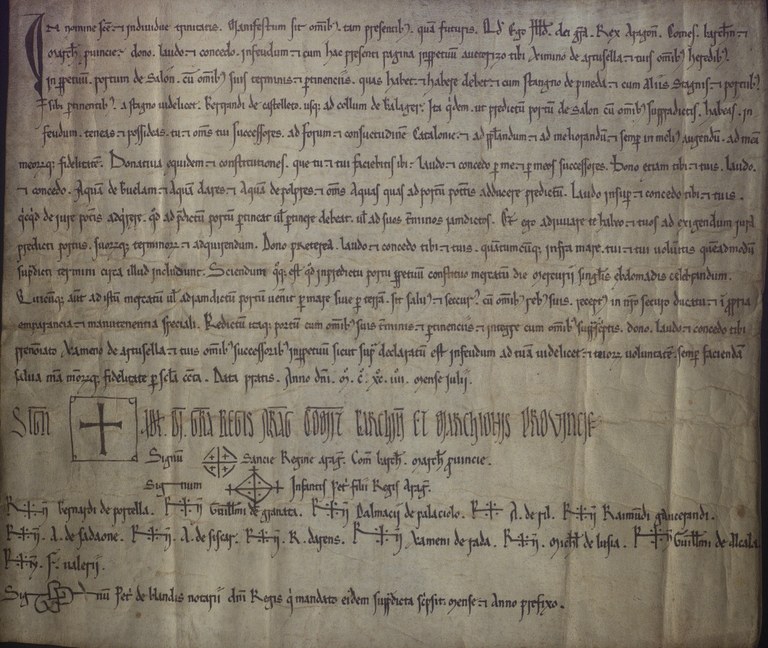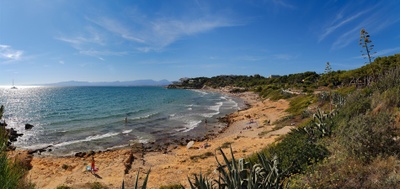Population charters were official documents issued by kings, feudal lords and ecclesiastical authorities with the purpose of repopulating those areas that were conquered by the Islamic world during the Reconquista.
These documents established the political organization of the territory, detailing the functions and responsibilities of rulers, as well as the rights and duties of neighbors. They sought to activate the local economy by encouraging the arrival of new inhabitants through arable land, tax reductions and the regulation of markets and fairs. They also ensured the defense of the settlement, organizing local militias, alarm systems or constructions such as walls and towers.
The population charters respond to the feudal system that governed the bases of society, both at a legal, economic and social level. This was based on the relationship of vassalage, where lords gave lands (fiefs) to vassals, in exchange for loyalty and military services. In this way, the occupation and consolidation of the territory was ensured, as well as urban and economic development, justifying Christian expansion and unifying the feudal lords under the same vassalage and crown.
The Reconquista began in the 8th century with the arrival of the Islamic world to the peninsula, where the remaining Christian kingdoms of the north reoccupied the territory over several centuries, until the complete Islamic expulsion in the 15th century, with the conquest of Granada.
A large part of these campaigns were carried out by the Crown of Aragon or Catalan-Aragonese, which originated with the confluence of the two kingdoms thanks to the marriage of Petronila, daughter and heir of Aragon, with Ramón Berenguer IV, count of Barcelona. in 1137.
The Camp de Tarragona was conquered by the Christians at the beginning of the 12th century, colonizing the territory under the feudal push, creating the settlement of Salou around 1152 under the ownership of Pedro Rasura. Shortly after, the first population charters began to be written by Alfonso II of Aragon "the Casto", son of Ramón Berenguer IV. There was a great need to populate this part of the Catalan region in order to ensure the fidelity of the feudal lords. and put pressure on the Saracens who had become strong in the Prades mountains.
Salou received its own town charter in 1194, granted to Ximeno d'Artusella, an official of the monarch, establishing a market on Tuesdays and allocating the port, as well as the surrounding waters, fields and beaches, including La Pineda and its lakes. , with the obligation to populate, organize and increase the natural port to activate the economy and ensure protection between the territories of Barcelona and Salou. This endowment was challenged by the archbishop of Tarragona in 1197 and will become his property, carrying out the same functions.
Salou was one of the first market towns in Camp de Tarragona, it played an important role with its natural port in the commercial, political and military sphere, thanks to the good conditions it presented, justifying the reason for Jaume's choice of it. I to undertake the conquest of Mallorca.
For this reason, Salou commemorates on 3rd, 5th, 6th and 7th July 2024 with different activities like the presentation of the population charter, the market, theatrical and circus performances, children's workshops and popular parades, among others. You can look up the programme here.
1194 Population Chart of Salou

- Consult the latin transcription of the Salou Population Charter here.
- Consult the translation from Latin to English here.
Portrait of King Alfonso II of Aragon by Rafael Pertús in the 17th century





















